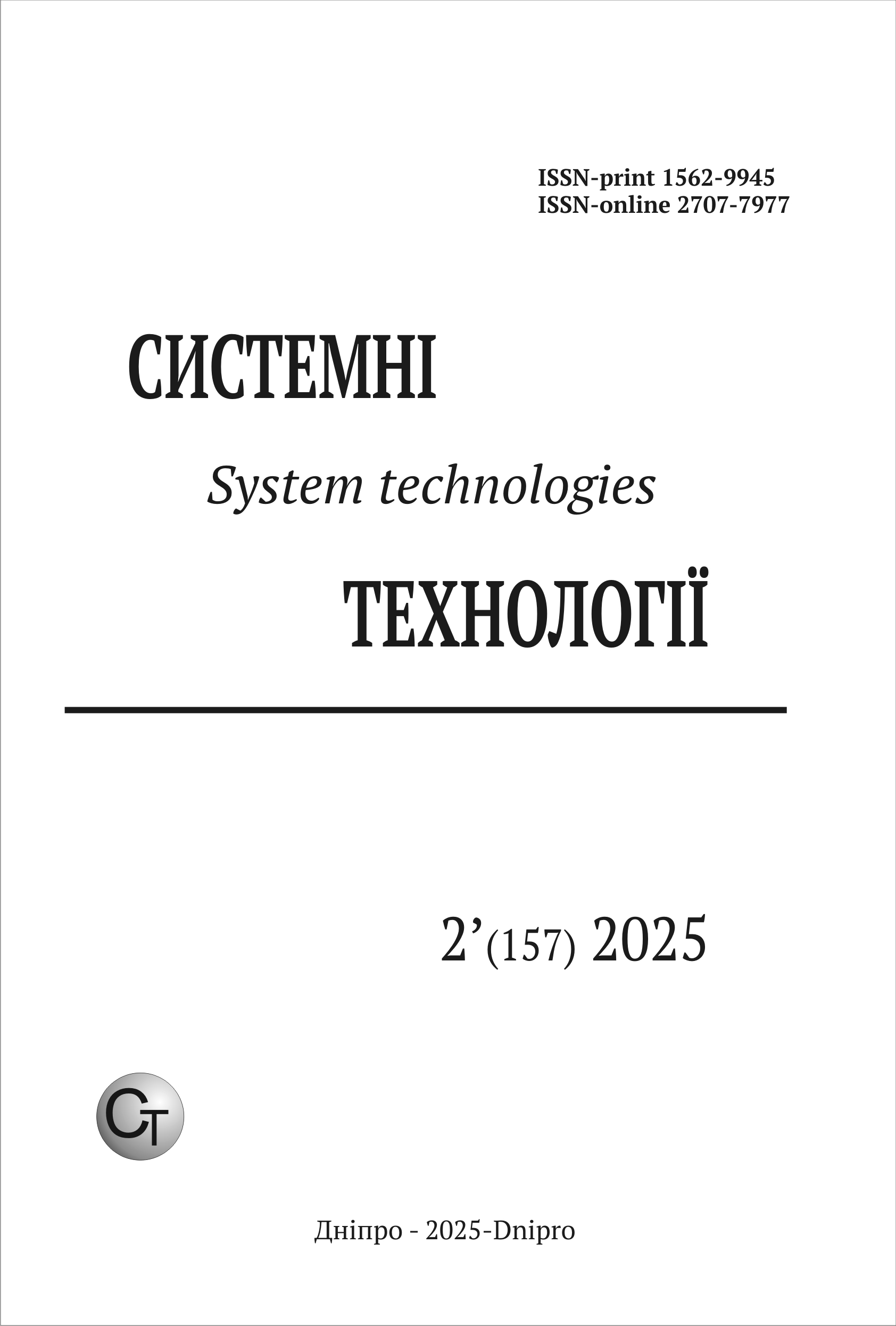Methods for analyzing web application interfaces to increase interactivity
DOI:
https://doi.org/10.34185/1562-9945-2-157-2025-15Keywords:
web applications, user interface, interactivity, interface analysis, usability, testing.Abstract
Analysis of Recent Research and Publications. Over the past decade, the role of website design in e-commerce has gained significant attention due to its influence on conversion rates and overall user experience. Previous studies emphasize the importance of aesthetics, usabil-ity, and navigation in enhancing customer satisfaction and driving sales. However, much of the existing research focuses on individual design elements such as color schemes, layout structures, or typography, without considering the cumulative impact of an innovative design approach. Furthermore, the integration of modern technologies, such as artificial intelligence (AI) and machine learning (ML), in the design of e-commerce websites has started to shape how businesses interact with consumers. The gap in the literature lies in understanding how these innovative design strategies, when applied cohesively, can optimize the user journey and increase conversion rates. Recent publications also highlight the importance of personalization and interactivity in the design process. Customization features tailored to user preferences, combined with streamlined interfaces, are emerging as key trends that influence how customers engage with digital platforms. However, the relationship between innovative web design features and their direct impact on e-commerce success remains underexplored. Purpose of the Research. The primary aim of this study is to examine how innovative website design impacts conversion rates and the user experience in the context of e-commerce. Specifically, the research explores how a blend of modern design principles, in-teractive elements, and advanced technologies can improve user engagement, facilitate smoother interactions, and drive sales. By analyzing the influence of website design on both user behavior and business outcomes, this study seeks to provide insights into the most effec-tive design strategies for e-commerce platforms. Main Body of the Research. This research employs a mixed-methods approach, combin-ing qualitative and quantitative data to assess the effectiveness of innovative design features on e-commerce platforms. The study focuses on the integration of visual appeal, user-centric design, and technology-driven interactivity in websites. The analysis includes a comparison of traditional website designs with those that incorporate cutting-edge technologies like AI-based recommendations, personalized user interfaces, and dynamic content features. Through user surveys, A/B testing, and web analytics, the study evaluates how users in-teract with websites that feature advanced design elements. Key factors such as navigation ease, response time, personalization features, and visual aesthetics are considered in relation to user satisfaction and conversion rates. Additionally, the research investigates how website design influences customer retention and repeat business, which are essential indicators of long-term success in e-commerce. The findings suggest that websites that integrate innovative design strategies not only enhance the aesthetic appeal but also significantly improve user interaction. Personalization features, in particular, have been found to increase user engagement, with customers spend-ing more time on sites and demonstrating higher conversion rates. Furthermore, a stream-lined and intuitive interface, coupled with fast load times, improves the overall user experi-ence, leading to more successful transactions. The research also identifies that AI-driven per-sonalization can help businesses tailor their offerings, further boosting sales. Conclusions. This study concludes that innovative website design plays a crucial role in improving both user experience and conversion rates in e-commerce. By employing modern design principles, incorporating interactive elements, and leveraging emerging technologies, e-commerce businesses can create more engaging and effective digital environments. These strategies not only increase user satisfaction but also contribute to higher sales and customer retention, ultimately enhancing the competitiveness of online businesses. Future research could explore the long-term effects of specific design innovations and their impact on cus-tomer loyalty, as well as the potential for further integration of AI and machine learning to optimize website functionality and user interaction.
References
Yarosh, V., Lahuta, V., Smolyakov, M., Tarasyak, I., Futilyak, S., & Rutar, R. (2024). The impact of innovative website design on conversion and user experience in e-commerce. Aca-demic Visions, (27).
Hostetler T. W. et al. Web accessibility trends and implementation in dynamic web appli-cations //arXiv preprint arXiv:2202.00777. – 2022.
Agbozo E. A hybrid data-driven web-based UI-UX assessment model //arXiv preprint arXiv:2301.08992. – 2023.
Mazinanian D., Bajammal M., Mesbah A. Style-Guided Web Application Exploration //arXiv preprint arXiv:2111.12184. – 2021.
V.Yu. Tsaryk, Vik. V. Hnatushenko. Study of methods of selection of graphic objects on websites to assess the quality of the interface / Vik.V.Hnatushenko, V.Yu. Tsaryk // System technologies. Regional interuniversity collection of scientific works. – Issue 3(140). – Dnipro, 2022. – P.143-154 DOI 10.34185/1562-9945-3-140-2022-12
Downloads
Published
Issue
Section
License
Copyright (c) 2025 System technologies

This work is licensed under a Creative Commons Attribution 4.0 International License.















